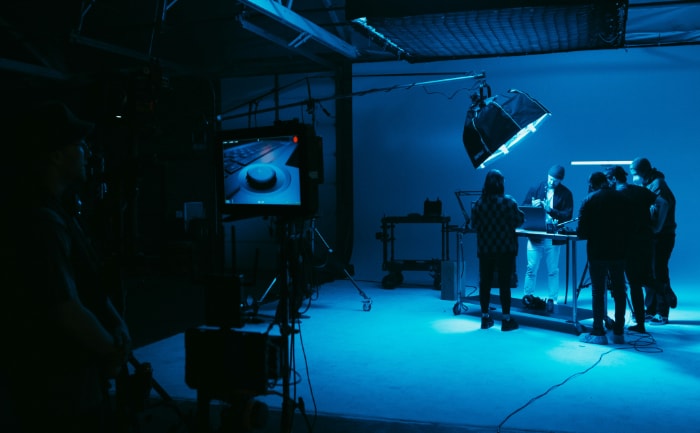HDR vs. SDR: How Modern Tech Redefines What We See

Visual technology has rapidly advanced, transforming how we view the world around us through screens. At the heart of this evolution lies a significant development: the shift from Standard Dynamic Range (SDR) to High Dynamic Range (HDR) in display technologies.
HDR and SDR are critical in enhancing our viewing experiences, yet they offer markedly different outcomes. Through HDR, visuals come alive with breathtaking brightness, contrast, and a palette of colors that SDR simply cannot match.
However, the presence of SDR in countless devices worldwide attests to its enduring relevance.
Standard Dynamic Range Technology
Standard Dynamic Range, or SDR, represents a range of brightness and color that can be displayed on a screen. Defined by a limited contrast ratio and color depth, SDR has set the baseline for digital imaging and video standards for decades.
This technology relies on a color space, typically Rec. 709, which dictates the range of colors a device can display, ensuring consistency across various devices.
SDR's Role as a Display Standard
SDR has been the universal display standard, primarily because it was developed in an era when the capabilities of digital screens and broadcasting limits were considerably lower than they are today. Its widespread adoption was due to the technological constraints of the time, making it a practical choice for content creation, distribution, and consumption.
The Limitations of SDR
Despite its significant role, SDR faces limitations, especially when compared to the capabilities of modern display technology. One of the primary drawbacks is its restricted dynamic range, which limits the depth of blacks and the brightness of whites.
This limitation often results in less lifelike images, as it cannot fully replicate the range of luminance and colors our eyes can perceive. Additionally, as displays have evolved to offer higher brightness and a wider color gamut, SDR's limitations have become more apparent, prompting a shift towards more advanced technologies that can meet today's demand for more immersive and vibrant viewing experiences.
HDR: Advancing Beyond Traditional Limits
HDR stands for High Dynamic Range, representing an enhancement in the way visuals are captured and displayed. This technology focuses on increasing the range of color and brightness in images and videos.
Essentially, HDR allows for brighter whites, darker blacks, and a wider spectrum of colors than SDR. This capability results in visuals that are much closer to what the human eye can perceive in the natural world.
Advantages of HDR Over SDR
The transition from SDR to HDR comes with a host of benefits that significantly improve the viewing experience. Three primary improvements include:
- Enhanced Brightness and Contrast: HDR dramatically increases the maximum brightness of displays, making the bright parts of an image truly stand out while maintaining detailed shadows.
- Greater Color Accuracy: With HDR, viewers can enjoy a broader color palette that includes more nuanced and vivid colors, leading to more realistic and engaging visuals.
- Depth and Detail: The enhanced contrast and expanded color gamut of HDR bring out finer details in the darkest and brightest parts of the picture, adding depth and a sense of realism.
The Variants of HDR Technology
There are several types of HDR technology, each designed with specific features to enhance visual performance in unique ways:
- HDR10: The most widely adopted HDR format, known for its 10-bit color depth and static metadata that sets brightness levels.
- Dolby Vision: A premium version of HDR that uses dynamic metadata, allowing brightness and color to be adjusted on a scene-by-scene or frame-by-frame basis.
- Hybrid Log-Gamma (HLG): Designed for live broadcasting, HLG is compatible with existing SDR displays while offering HDR-quality for compatible devices.
The Technicalities: HDR vs. SDR

The difference between HDR and SDR lies in their approach to brightness, contrast, and color representation. SDR, constrained by older display technologies, operates within a limited brightness range and a narrower color spectrum.
In contrast, HDR breaks these boundaries, allowing for a much wider brightness range and a broader spectrum of colors. This capability enables HDR-equipped displays to produce images that are closer to the full spectrum of human vision, with deeper blacks, brighter whites, and more vivid colors than SDR can achieve.
Luminance and Color Gamut in HDR
Luminance, or the brightness of an image, and color gamut, or the range of colors a display can produce, are two areas where HDR significantly enhances the viewing experience:
- Luminance: HDR increases the maximum brightness level of displays, allowing for a greater contrast ratio. This contrast ratio is crucial for depicting more detailed textures and patterns, especially in areas of extreme darkness or brightness, where SDR displays might lose detail.
- Color Gamut: HDR extends the color range of displays, enabling them to cover a wider portion of the color spectrum. This expansion means that colors can be more accurately represented, with richer reds, deeper greens, and more vibrant blues, thereby creating a more lifelike image.
Impact on Content Creation and Consumption
The technical improvements HDR brings to the table have a profound impact on both how content is created and how it is consumed:
- Content Creation: For creators, HDR opens up new avenues for artistic expression. Filmmakers, game developers, and photographers can now craft their works with a broader palette of colors and contrasts, allowing for more nuanced storytelling and immersive experiences.
- Content Consumption: On the consumer side, HDR elevates the standard of visual entertainment. Movies appear more realistic, games more engaging, and photographs more vivid. The enhanced detail and color fidelity also mean that viewers can enjoy a more captivating and immersive experience, regardless of the medium.
HDR and SDR Across Different Media Platforms
With the rapid evolution of display technology, the difference between High Dynamic Range (HDR) and Standard Dynamic Range (SDR) has become a critical consideration for consumers and creators alike.
HDR and SDR in Television and Movies
The cinematic world has seen a significant shift with the adoption of HDR, offering a more immersive viewing experience compared to SDR. HDR enhances visual storytelling by providing directors and cinematographers with the ability to present their work with unparalleled depth, brightness, and color accuracy.
- Television and Movies: In this arena, HDR brings scenes to life with stark contrasts and vibrant colors that more closely mimic real-life visuals. For viewers, this means that the blazing sunsets, shadowy figures, and intricate details in costumes and environments are more vivid and engaging.
- Viewer Experience: The heightened realism and detail provided by HDR can transform the viewing experience, making the audience feel more connected to the story. SDR, while capable, lacks this level of immersion, often resulting in a flatter, less dynamic presentation.
The Advantages of HDR in Gaming
Gaming is another domain where HDR technology shines, elevating the visual experience to new heights.
- Visual Enhancement: HDR enhances gaming with its superior contrast ratio and color accuracy, making virtual worlds more enticing and realistic. This technology ensures that bright areas glow with intensity while dark spaces maintain their depth, providing a more three-dimensional feel to the game environment.
- Gaming Experience: For gamers, this means not just prettier pictures but also a competitive edge. The enhanced detail allows players to spot enemies in shadows or notice subtle cues in the environment, making gameplay more immersive and potentially improving performance.
Comparing HDR and SDR in Mobile and Computer Displays
The impact of HDR is not limited to TVs and gaming consoles; it also extends to mobile phones and computers.
- Mobile and Computer Displays: On these devices, HDR enhances the viewing experience by improving the clarity and color of photos, videos, and games. Whether it's viewing a movie on a tablet or editing photos on a laptop, HDR displays render content with greater detail and vibrancy.
- User Experience: For everyday users, the difference between HDR and SDR on these devices can be profound, transforming mundane visuals into stunning visuals. The technology not only improves content consumption but also content creation, offering photographers, videographers, and designers a more accurate representation of their work.
Across these varied applications, HDR consistently delivers a superior viewing and interactive experience compared to SDR, underlining its importance in the future of digital media consumption and creation.
The Hurdles of HDR Adoption

As the transition from Standard Dynamic Range (SDR) to High Dynamic Range (HDR) continues to unfold, several challenges and considerations come to the forefront. These range from compatibility issues and increased data demands to thoughtful considerations for consumers pondering the upgrade.
Compatibility Concerns Between HDR Content and Devices
One of the primary hurdles in adopting HDR is ensuring compatibility between content and display devices. Not all HDR formats are universally supported across screens and media players, leading to potential discrepancies in viewing quality.
For example, a television might support HDR10 but not Dolby Vision, affecting the range of content that can be viewed in true HDR quality. Additionally, older hardware may require significant updates or outright replacement to handle HDR content, adding another layer of complexity for consumers looking to upgrade their home entertainment systems.
The Impact of HDR on Bandwidth and Storage
HDR content, with its richer color depth and higher contrast ratios, demands more from data storage and transmission bandwidth than SDR. High-quality HDR videos require more data to maintain their enhanced visual fidelity, leading to larger file sizes.
Consequently, streaming HDR content or downloading it for offline viewing can consume significantly more internet bandwidth and storage space on devices. This increase necessitates more robust internet connections and larger storage solutions, impacting both consumer experience and infrastructure requirements.
Upgrading From SDR to HDR: Consumer Considerations
For consumers considering the switch from SDR to HDR, several factors warrant attention. The initial cost of upgrading to HDR-compatible devices is a significant consideration, as is the availability of HDR content that justifies the investment.
Additionally, understanding the differences between various HDR formats and the compatibility of their existing devices with these formats is essential. Consumers must also weigh the tangible benefits of enhanced visual quality against the costs and potential hurdles of transitioning to a primarily HDR-based viewing experience.
Conclusion
High Dynamic Range (HDR) technology has redefined the boundaries of visual display, offering a depth and richness that Standard Dynamic Range (SDR) simply cannot match. The stark differences between HDR and SDR—be it in brightness, contrast, or color accuracy—underscore a significant leap forward in how we experience digital content.
HDR brings us closer than ever to replicating the full spectrum of human vision in digital form, transforming not just what we watch but how we perceive visual media.
Looking ahead, the trajectory of HDR technology promises even further enhancements in content creation, distribution, and consumption. Filmmakers, game developers, and content creators are now equipped with a broader canvas to express their visions, promising audiences more immersive and engaging experiences.
As the industry continues to adapt, we can anticipate a wider adoption of HDR in various devices and platforms, making these enriched visual experiences more accessible to everyone.
For viewers, the shift to HDR offers a tangible improvement in the quality of movies, TV shows, games, and even day-to-day content on mobile and computer screens. The move from SDR to HDR is not just a technical upgrade but a fundamental change in the visual storytelling language, enabling emotions and environments to be conveyed with unprecedented clarity and impact.
It is one thing to read about the advantages of HDR, but it is quite another to experience them firsthand. The vibrancy of colors, the depth of the blacks, and the brightness of the whites all combine to create a viewing experience that truly has to be seen to be believed.
For those yet to explore the world of HDR content, now is the perfect time to witness these benefits for yourself and see what you've been missing. The leap from SDR to HDR is a journey well worth taking, offering a glimpse into the future of digital media that is already here for the embracing.


